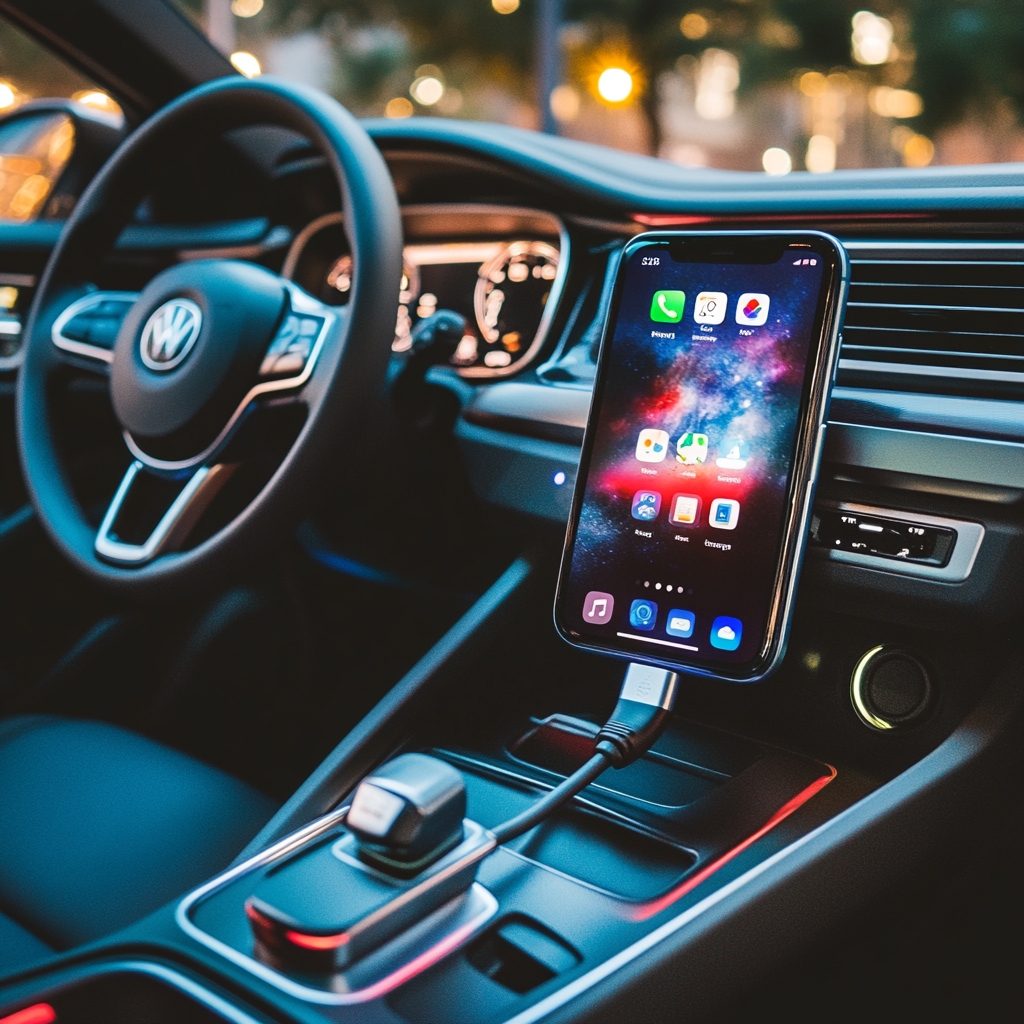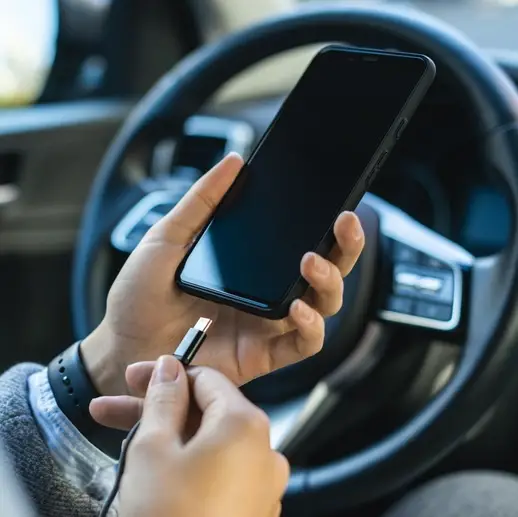We’ve all been there – you’re on a road trip, your phone battery is dwindling, and that car charger in the console starts looking mighty tempting. But before you plug in, you might want to think twice. While charging your phone in the car seems like a convenient solution, it can actually pose some serious risks to both your device and your vehicle. Let’s explore why you might want to keep that phone unplugged during your next drive.
Your car’s electrical system wasn’t designed for smartphones

Your car’s electrical system is a complex network designed primarily to power vehicle functions, not your latest iPhone or Android device. When you plug your phone into a car charger, you’re tapping into this system, which can lead to some unexpected consequences.
The alternator, which charges your car’s battery and powers the electrical system while the engine is running, wasn’t built with smartphones in mind. It produces a fluctuating power supply that can be inconsistent and potentially harmful to your phone’s delicate circuitry.
While many modern car chargers include voltage regulators and current limiters, cheaper or poorly made chargers might not offer adequate protection. This inconsistent power supply can lead to slower charging times, reduced battery life, or in worst-case scenarios, damage to your phone’s charging port or battery.
Draining your car battery is a real risk
One of the biggest dangers of charging your phone in your car comes when the engine is off. It might seem harmless to plug in your phone while you’re parked, but this can actually drain your car’s battery surprisingly quickly.
Car batteries aren’t designed for the constant, low-level drain that phone charging requires. If you make a habit of charging your phone with the engine off, you might find yourself with a dead car battery – and that’s a much bigger problem than a dead phone battery.
What if you forgot to unplug your phone overnight? You might wake up to find your car won’t start at all. Now you’re not just dealing with a drained phone, but potentially expensive car repairs or a tow truck call.
Overheating is a serious concern

Cars can get hot – really hot. On a sunny day, the interior of a parked car can reach temperatures well over 100°F (38°C). Now imagine your phone, plugged in and charging, sitting in that heat.
Excessive heat is one of the biggest enemies of lithium-ion batteries, which power most modern smartphones. When these batteries get too hot, their capacity can be permanently reduced, leading to shorter battery life in the long run.
In extreme cases, overheating can even cause battery swelling or, in rare instances, fire or explosion. While these extreme scenarios are uncommon, they’re not impossible, especially if you’re using a low-quality charger or leaving your phone in direct sunlight while charging.
Cheap chargers can be dangerous
Not all car chargers are created equal. That bargain-bin charger you picked up at the gas station might seem like a great deal, but it could be putting your phone – and potentially your car – at risk.
Cheap, poorly made chargers often lack important safety features like surge protection or proper voltage regulation. They might deliver too much power to your phone, damaging its battery or charging circuit. In some cases, they can even overheat or short-circuit, posing a fire risk.
Investing in a high-quality charger from a reputable brand might cost more upfront, but it’s a small price to pay for the safety of your expensive smartphone – not to mention your car and personal safety.
Unsecured phones can damage charging ports

Ever hit a bump in the road and heard your phone clatter around the center console? That’s more than just an annoying sound – it could be damaging your phone’s charging port.
When your phone is plugged in but not secured, every bump and turn can put stress on the charging port. Over time, this can lead to loose connections or even physical damage to the port. A damaged charging port can mean inconsistent charging, or worse, render your phone unable to charge at all.
If you must charge in the car, using a secure phone mount can help mitigate this risk. But remember, the safest option is often to wait until you reach your destination to plug in.
Distracted driving is a real danger
Let’s face it – when your phone is plugged in and charging, it’s all too tempting to check that notification or respond to that text. But using your phone while driving is not just illegal in many places, it’s incredibly dangerous.
Studies have shown that distracted driving is a leading cause of accidents. Even a quick glance at your charging phone can take your eyes off the road long enough to cause a serious accident. Is that really worth the risk just to add a few percentage points to your battery life?
By choosing not to charge your phone in the car, you’re removing one potential source of distraction, helping you stay focused on the road and arrive safely at your destination.
Malware through juice jacking is a growing threat
While this isn’t a concern when charging in your own car, it’s worth mentioning as a reason to be cautious about charging your phone in unfamiliar vehicles or public charging stations.
“Juice jacking” is a type of cyber attack where malicious actors use charging ports or cables to infect devices with malware. While this is more commonly associated with public charging stations, it’s not impossible in a car setting, especially if you’re using someone else’s charger or in a rental car.
The FBI has warned against using public USB charging ports for this very reason. By avoiding charging your phone in unfamiliar settings, including cars, you can help protect your device from this emerging threat.
Better alternatives exist
With all these potential risks, you might be wondering how to keep your phone charged on the go. Fortunately, there are safer alternatives that don’t put your phone or car at risk.
Portable power banks have become increasingly affordable and powerful. These devices allow you to charge your phone anywhere without relying on your car’s electrical system. Many can hold enough charge to power your phone multiple times over.
For longer trips, consider a solar-powered charger. These eco-friendly devices can keep your phone topped up using nothing but sunlight – perfect for road trips or outdoor adventures.
In the end, the convenience of charging your phone in your car simply isn’t worth the potential risks. From damaging your phone’s battery to draining your car’s power, the downsides far outweigh the benefits. By being aware of these risks and planning ahead with alternative charging methods, you can keep both your phone and your car running smoothly for years to come. Remember, a little inconvenience now can save you from major headaches – and potentially dangerous situations – down the road.

